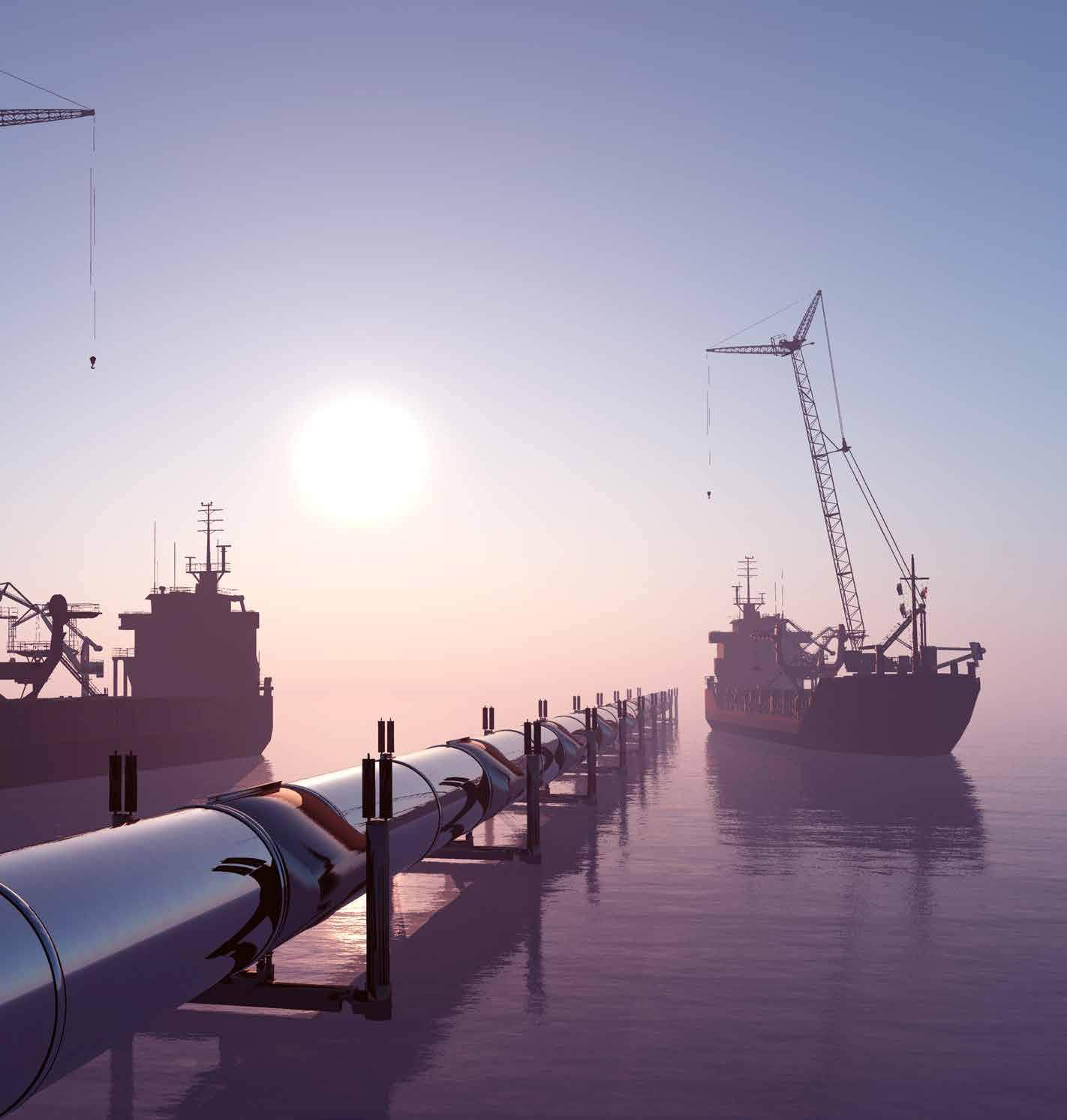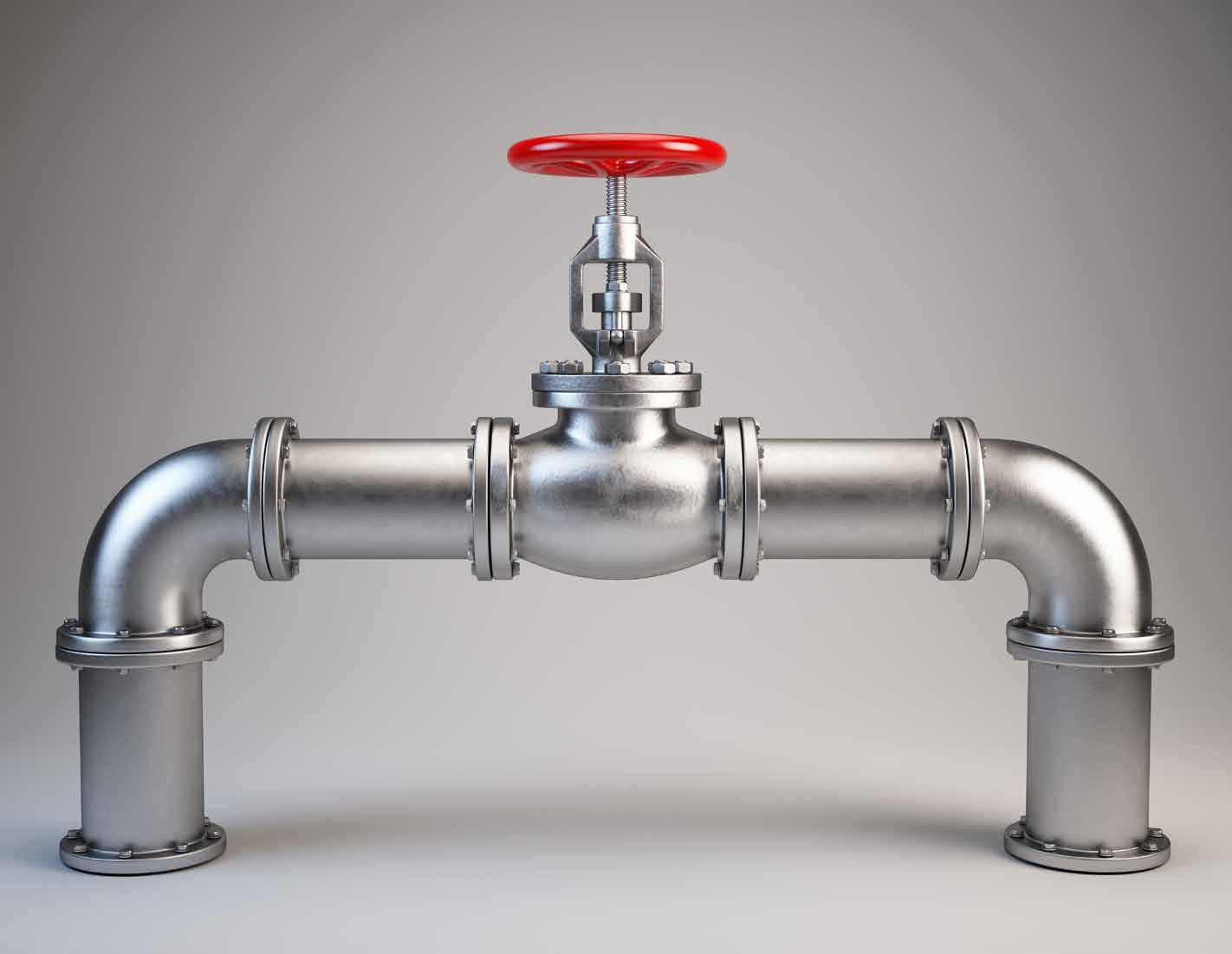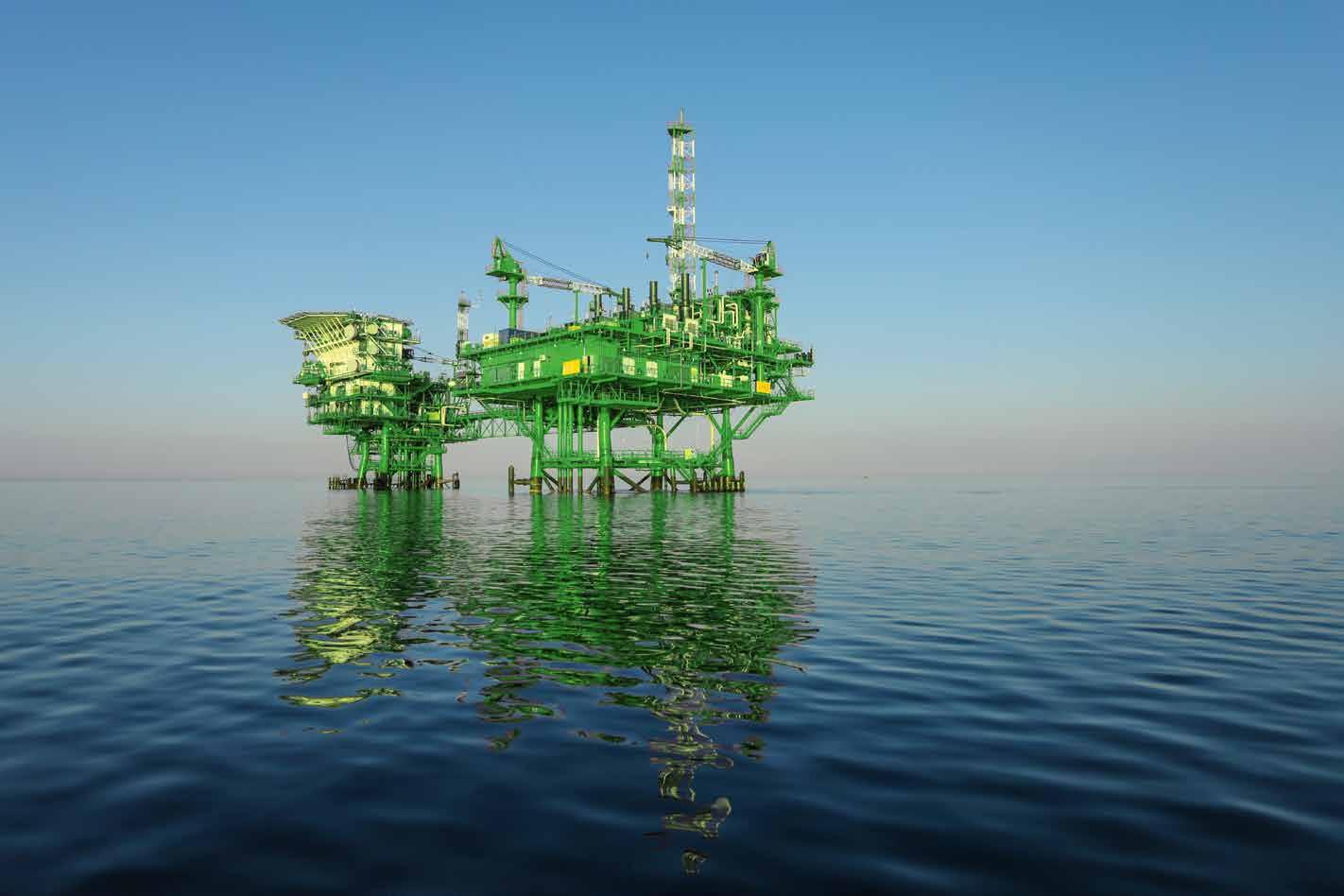I N DEGYPT U S T RYUPDATES INSIGHTS
THE MAKING OF
A MULTILATERAL GAS HUB
BY MAI EL GHANDOUR
I
t is often said that multilateralism is key to advance regional as well as global energy goals. When the East Mediterranean gas saga began to unfold a decade ago, a regional accord had to be struck and multilateral agreements were necessary in order for a gas hub to be conceived. An increasing number of cooperation opportunities were put on the table; from pipelines to “pipedreams”.
Although seemingly progressive at first glance, most export options whether pipelines or liquefied natural gas (LNG) facilities in Egypt or its neighboring countries have continuously fallen flat throughout the years. Nonetheless, many multilayered deals still aspire to foster a new era of economic and political stability in the region. But is multilateralism elongating the road to become a hub? Minister of Petroleum and Mineral Resources, Tarek El Molla, asserted that the multilateral nature of gas export arrangements does not happen overnight. In fact, he insisted during an energy conference in the United Arab Emirates (UAE), last September, that Egypt’s export plans are actually still on track.
WHY EGYPT? When it comes to choosing a strategic natural gas hub, Mohamed Hanafy, Director of Oil & Gas at Arab Engineering & Distribution Company, told Egypt Oil & Gas (EOG), “Geographically speaking, there is no doubt that Egypt has been blessed with a key strategic central location that facilitates exports in all directions and towards all continents almost equidistantly. In terms of gas export, it means shorter pipelines and simpler infrastructure investments are needed to convey the gas to the Middle East, Europe and Asia.” Apart from the geographic location, another factor makes Egypt readily capable of becoming a central regional gas hub. According to Hanafy, with significant reserves, Zohr is one of the key resources for establishing a gas hub in Egypt, leveraging Egypt’s position to provide consistent natural gas supplies to address the region’s demand. Echoing the same sentiment, Aboud Zahr, Managing Director at DEP Levant Oil & Gas, remarked to EOG that “Due to the available oil and gas infrastructure and networks in Egypt any potential hub in the East Med shall be built around Egypt. This fact reduces the amount of investments and at the same time the risk which 24
EGYPT OIL & GAS NEWSPAPER
international oil major will have to take.” However, Mona Sukkarieh, energy and political risk consultant and co-founder of Middle East Strategic Perspectives, told EOG, “Beyond Egypt, and up until this point, the nature of these deep-water discoveries in the Eastern Mediterranean, size of the local markets and limited infrastructure did not grant the countries with this newlyfound resource wealth the autonomy they would have wished for to fully exploit and export these resources.”
LNG INFRASTRUCTURE Egypt has two LNG plants; the first one is in Idku plant owned by the Egyptian LNG, and includes two liquefaction units. The second one is in Damietta and includes one liquefaction unit. “Leveraging existing infrastructure in Egypt appears to be, at this stage, the optimal option to facilitate the monetization of the region’s offshore gas resources,” Sukkarieh added. The bulk of Egypt’s gas exports is LNG from its Idku terminal. Damietta, on the other hand, has an annual capacity of up to five million tonnes and can store 130,000 tonnes of LNG, governmental websites show. The two plants have a combined capacity of 19 billion cubic meters per year (bcm/y). “I believe the existing infrastructure for gas processing and liquefaction acts as a strong core for this mega project to build on. Egypt benefits from a network of pipelines and the presence of existing liquefaction facilities in several coastal cities that can readily be integrated as part of the masterplan to establish a gas hub in the region,” Hanafy stated.
A NETWORK OF PIPELINES Egypt also has the Sumed pipeline, which carries oil from a terminal at Ain Sokhna on





